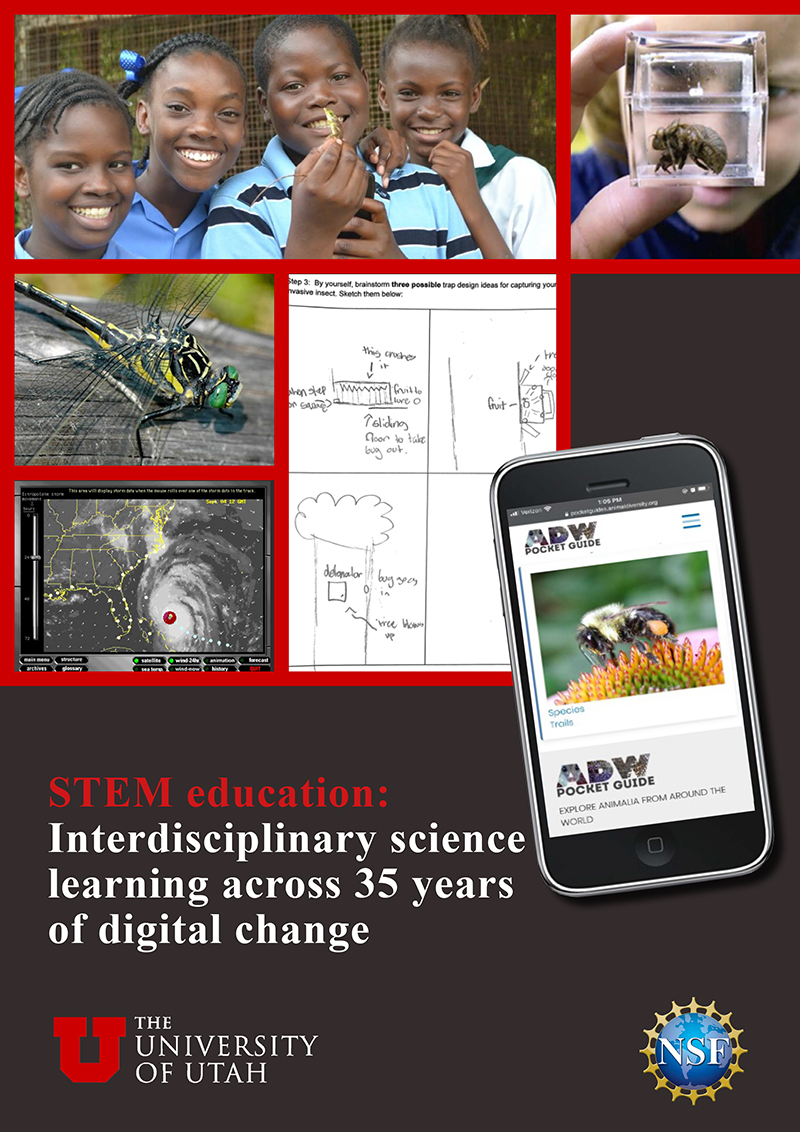Highlighting problem-solving and students’ study of real science, this eBook provides examples from three decades of research and development focused on adolescents’ STEM education and learning with and through emerging technologies
Our world faces complex, interconnected challenges – many rooted in Science, Technology, Engineering, and Mathematics (STEM). As traditional fields such as science, mathematics, engineering, and data science evolve and merge, new problem areas emerge, creating an urgent need for interdisciplinary expertise. However, STEM education has struggled to keep pace with this shifting landscape.
Research studies provide evidence that progressive STEM education goes beyond memorizing facts. The best learning experiences nurture critical thinking, innovation, and adaptability – skills essential for solving local problems, excelling in the workforce, and developing community-driven solutions. To tackle these challenges effectively, we must equip the next generation with the skills and knowledge needed to drive meaningful change.
This e-book provides a brief summary of successes and challenges realized in research, technological innovations, project-based curricular programs, student learning outcomes, and teacher learning over thirty-five years. Organized as four multi-year partnerships with public school teachers, administrators, students, and families, we emphasize research and development tools with these features:
- Resources for students and teachers that recognize current ideas about how children learn and how teachers facilitate problem-based learning, including the idea that developing critical thinking about a topic is a slowly developing ability over time,
- Science units that guide students in activities known to promote critical thinking skills, including students asking their own questions, collecting and analyzing real data, building scientific explanations, and engineering solutions to solve local environmental challenges,
- Six to eight-week, project-based science curricular units delivered with the support of local environmentalists and built to help students realize possible solutions to local environmental issues and
- Professional state-of-the-art data and visualization resources adapted and transformed for learning by adolescents aged 10-15 years old.
The following sections outline the four National Science Foundation-supported research projects focused on adolescents’ study of weather and live hurricanes, local biodiversity, the impacts of climate change on species distribution, and the engineering design of solutions to mitigate the impact of invasive insects on local agriculture and ecosystem stability.
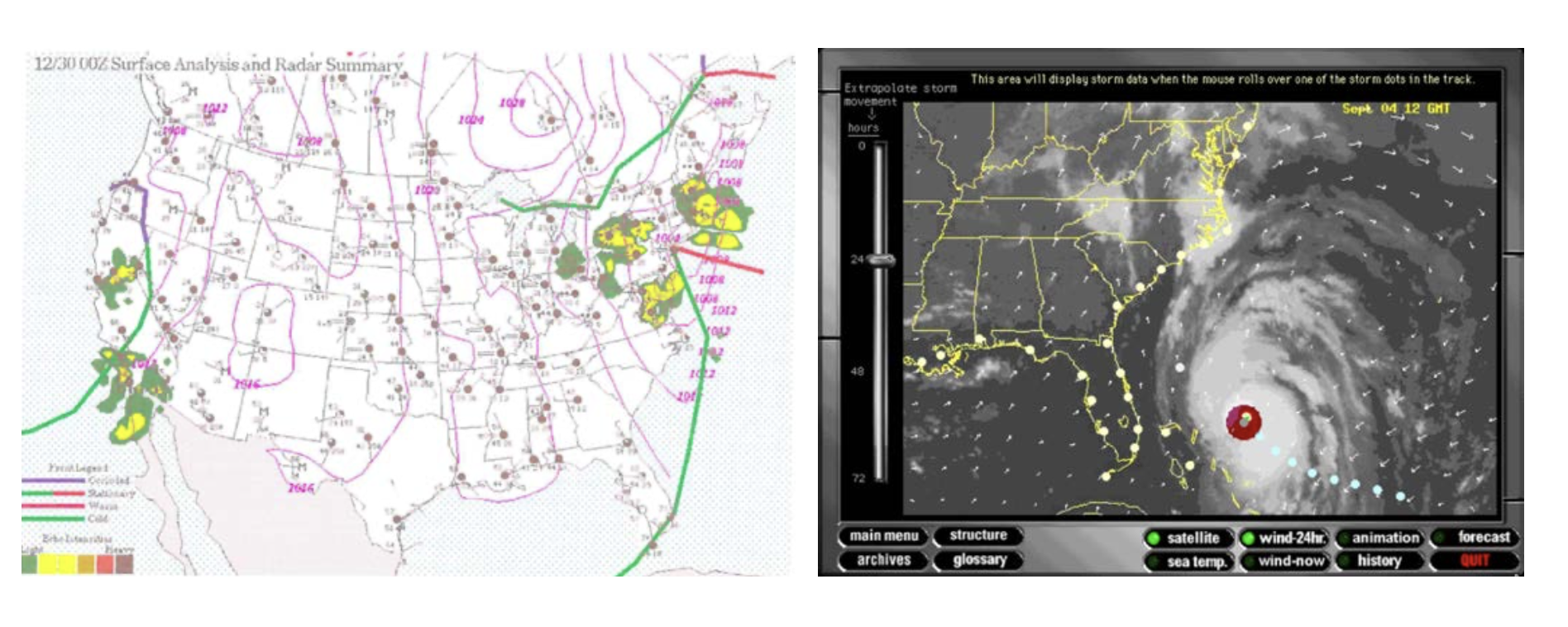
1. 1991-2001 Hurricanes & Kids as Global Scientists
The Kids as Global Scientists (KGS) and Hurricane projects began in 1991, as the Internet was in its most nascent and unfriendly form. In partnership with atmospheric scientists from the National Center for Atmospheric Research (NCAR) and the University of Michigan, we described Kids as Global Scientists as follows:
Kids as Global Scientists is a new kind of Internet- enhanced curriculum designed to encourage middle school students’ inquiry and research. Students use visualization and telecommunications technologies to learn about science both locally and through interaction with peers and resources worldwide. The power of the Internet lies in its ability to expand students’ learning by placing a greater emphasis on questioning, dialogue, and real-time resources. Students investigating a hurricane off the coast of Florida can download real-time imagery of the event and correspond with on-site students about the storm’s patterns and characteristics. In these ways and others, effective use of the Internet and its resources can transform static, generalized learning into profoundly personal and meaningful interactive experiences.
Over ten years and with funding from the National Science Foundation, the KGS project team provided:
- An eight-week, reform-minded software, curriculum, and resource package that served as a comprehensive, ready-to-use resource for teachers and students,
- Guidance, access, and activities for students’ generation of data using a mobile app modeled after professional tools and customized for the project,
- An online scientist and globally-distributed cluster of schools with which to communicate,
- Activities that emphasized the learning of complex reasoning in science,
- Assessments that prioritized providing evidence of complex reasoning in science,
- A teacher listserv allowing teachers to communicate with one another, sharing ideas, frustrations, and experiences, and
- Suggestions for curricular extensions beyond science into math and language arts.
Research studies involved numerous students and teachers from around the world. For example, between 1992 and 1996, approximately 4,000 middle school students participated in the KGS Global Exchange, with the Spring 1996 Exchange involving 1,600 students and 45 teachers from 40 locations worldwide.
Teacher Comments mentioned the enthusiasm students had for this new resource, the Internet, as a means of tracking and discussing hurricanes in real time and communicating with professional scientists and students all over the world. Teachers said,
One of the best things… was the kids were really psyched… we’d talk about the weather constantly. It was just kind of a cohesiveness to the whole class while we were doing the project. They felt that there was a special quality to it because they were doing the same things as all these kids in the different schools… it just opened up so many different areas of conversation and exploration.
I think the kids learned a lot about weather… I think that some of them really got some complex ideas about weather and kind of the idea being that it is this huge system with lots of different factors… I liked the forecasting activity, too. I thought it was really neat that the kids could come in and… look at current weather maps and make a prediction and then come in the next day and find out if they were right or not. I think they really enjoyed that, and… they learned a lot from having to incorporate… different pieces of information. So I think that was really positive.
Students also described how learning was different with these new project-based units and this new tool, the Internet, when they said,
It’s different because they [students in others locations] give you their point of view of the weather, not what other books give you… every day is the same to books.
What I liked about KGS was it was really fun and I got to know a lot of people. I learned a whole bunch of things about wind when we collected data.
Research results also revealed positive learning outcomes and new features that enhanced students’ learning. These included:
Relevance
Many research studies outline how many students do not find classroom science interesting or relevant to their lives. According to our teachers, one of the most substantial benefits of the KGS program was the many opportunities for students to find personal meaning and relevance in the KGS activities. Several teachers described the enthusiasm students experienced when they used Internet technologies to track live storms, share their scientific understandings and personal experiences with other students, use message-board conversations to combat stereotypes, and in various ways connect their own experiences with those of others. We believe the program allowed students to find science relevant as a result of the open-ended nature of activities and the control students experienced over their own learning, including asking their own questions about storms.
Benefits to student science knowledge development and inquiry skills
Another benefit was the teachers’ belief that students were learning important science content about weather systems, forecasting, and data analysis, and were developing explanations and writing skills through the online message-board conversations. Several teachers described the value of these learning opportunities and the positive challenges that such activities presented to students, allowing many to strive toward their full potential, as compared to more traditional and less challenging curricula.
Learning benefits for special populations of students include new challenges and opportunities
Two teachers described how the inquiry and Internet-sharing dimensions of the KGS pedagogical approach provided challenging opportunities for new learning among special groups of students. One teacher described how some of her lowest achievers would earn a C or D “for the first time ever.”
Benefits to teacher learning
Several teachers described how a program that tracks current science and uses technology to foster inquiry thinking also provides challenging and important opportunities for the teachers’ own learning, in both science and technology.
Student enthusiasm and strong self-esteem
One teacher described the impact on her students’ enthusiasm for learning and self-esteem by having them participate in a program that utilized new technologies and had high visibility in the school.
Overall, each of these benefits would not be present without the technology components of our program. For example, Internet conversations and real-time weather forecasting enabled students to counter stereotypes about Detroit, share their own views on tomorrow’s weather in another city, and have conversations with online scientists. For more information, see Songer, Lee, and Tam (2002).
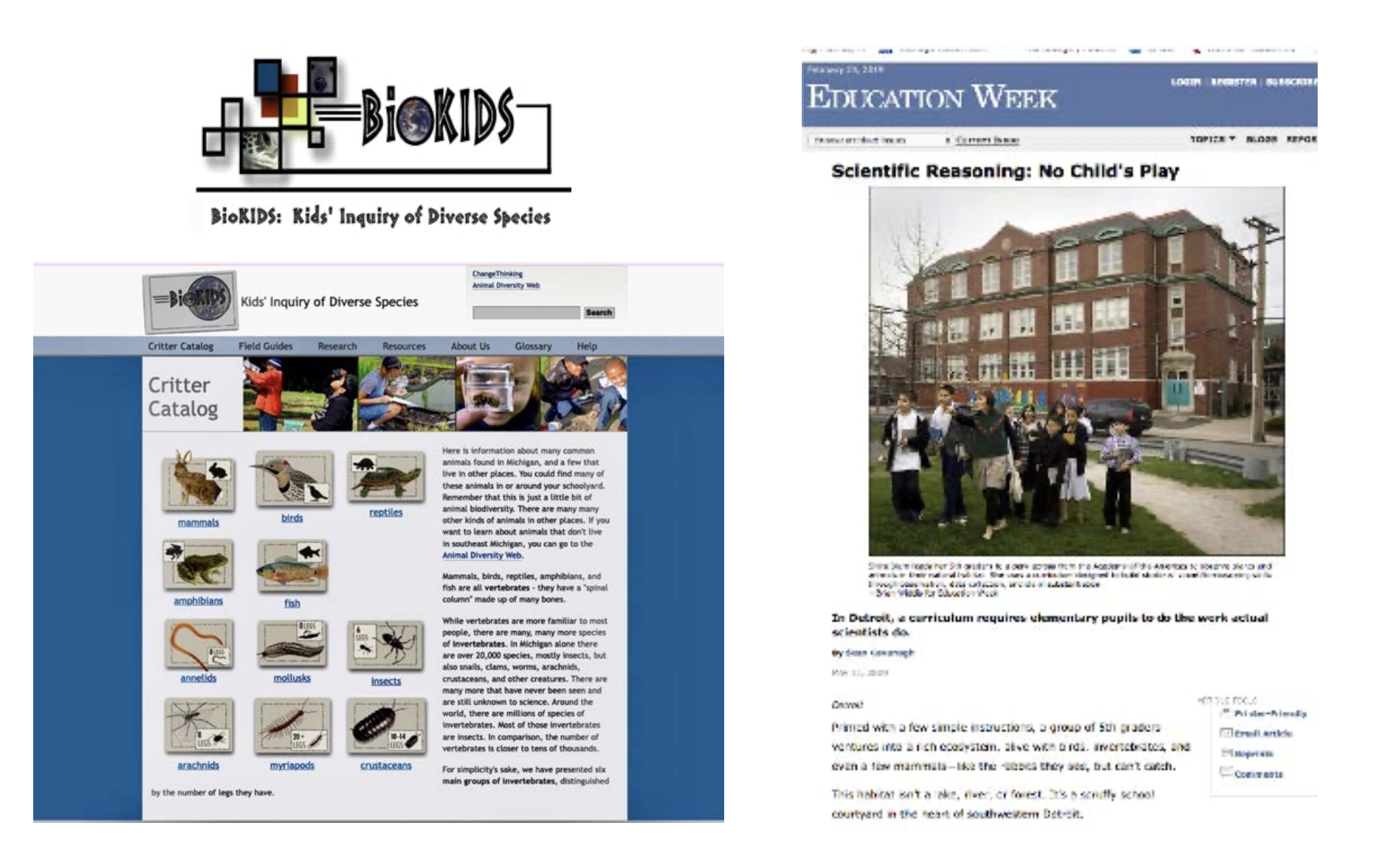
2. 2002-2012 BioKIDS: Kids’ Inquiry of Diverse Species
Funded by the National Science Foundation for ten years, the goal of the BioKIDS: Kids’ Inquiry of Diverse Species project was to create and study student learning with three project-based curricular and technology units that encompassed an entire academic year. These programs recognized that the development of complex science knowledge requires time and guidance over multiple topics.
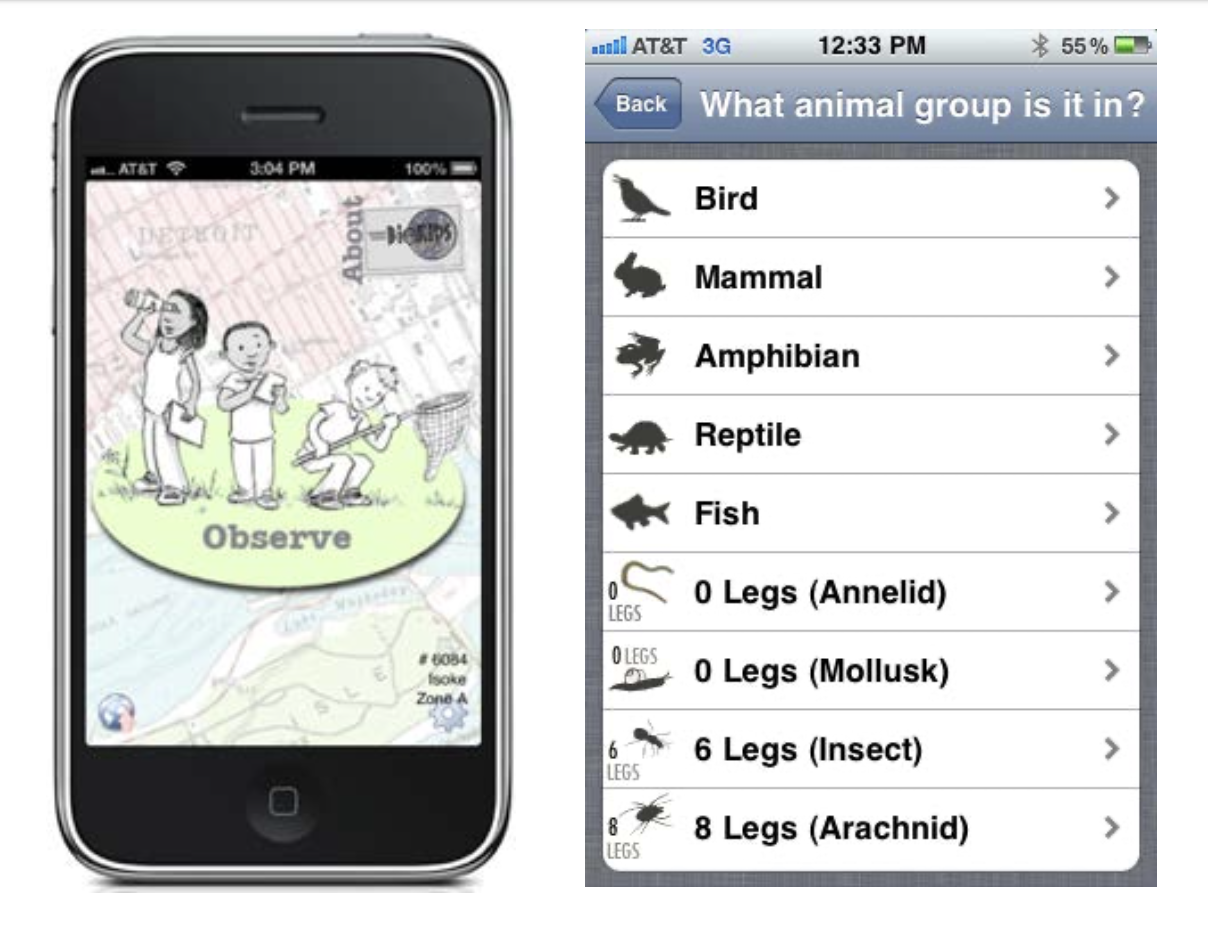
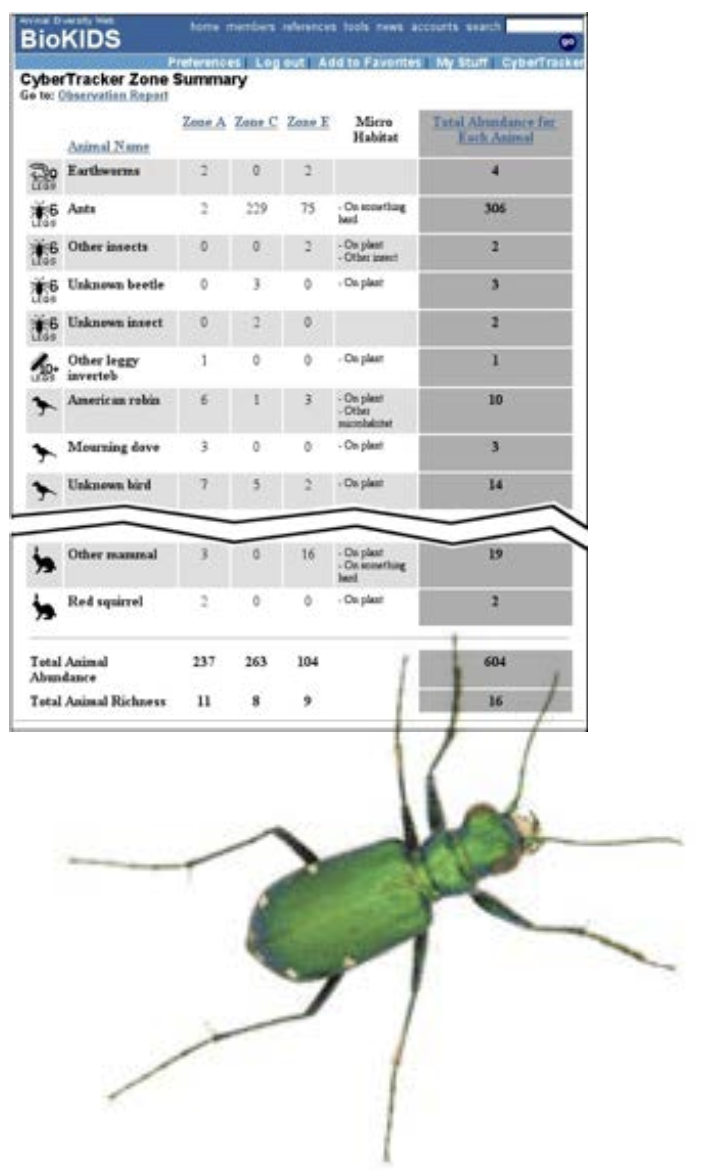
Each curricular unit focused on eight weeks of activities for students that were designed to guide students to develop three dimensions of science knowledge simultaneously: Disciplinary Core Ideas (e.g., an insect has six legs), Science and Engineering Practices (e.g., collecting and analyzing data), and Cross-cutting Concepts (e.g., patterns). The science knowledge that integrates all three dimensions of science is called three-dimensional science (3D).
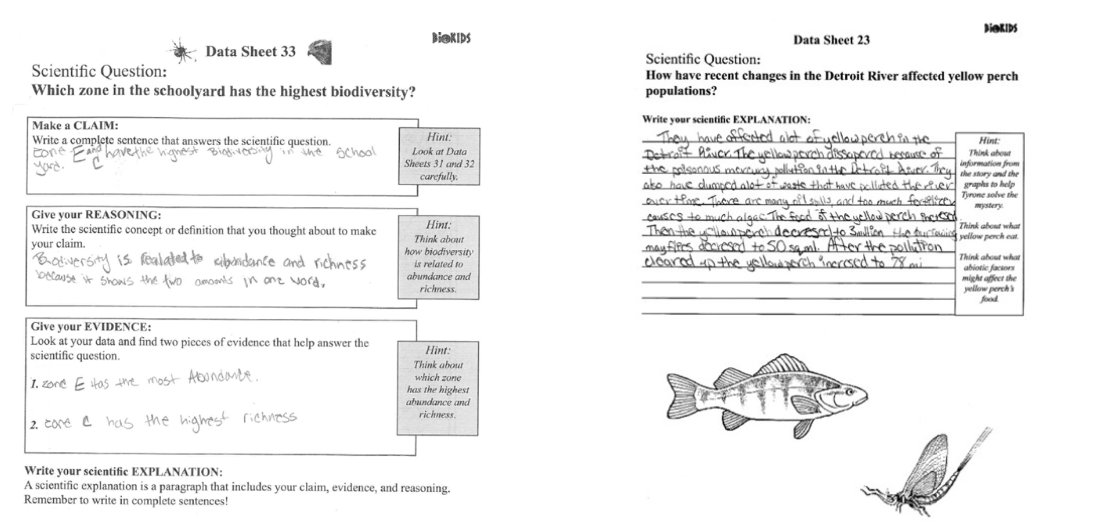
The BioKIDS curriculum materials contained carefully sequenced 3D science inquiry-focused activities. Our pedagogical approach encourages students to ask their own questions, collect their own data, and analyze it to draw explanations
and conclusions. For example, students use the Critter Catalog, an online animal species database developed by the BioKIDS team, to identify local organisms and learn about the behavior and resource availability of local animals. Students used the Critter Catalog as the leading resource to create their own species accounts (research individual animals). In other activities, students used CyberTracker, an animal-tracking program that runs on hand-held computers or phones, to log animal sightings in their schoolyard. Students then generate a class spreadsheet, a CyberTracker Summary, of all the animal sightings in the area. Next, students analyzed their data to answer questions such as how many different animal species (richness) or the number of animals (abundance) were observed in their school yard. The unit concludes with students using their class data to construct a scientific explanation to address the question, Which zone in the school yard has the highest biodiversity?

Results
A central dimension of the BioKIDS work is the recognition that the development of complex 3D science learning takes more time and coordination across units than is often recognized. The current high-stakes assessment instruments are not well matched to the learning emphasized in these units. The BioKIDS project not only developed consecutive units of inquiry fostering activities to encompass an entire academic year, but also developed technologies specifically tailored for students’ data collection and analysis of real scientific data and assessments designed to evaluate early, intermediate, and advanced levels of complex reasoning across the three sequential units.
We conducted quasi-experimental studies comparing learning outcomes of students within minimal and complete curriculum implementation cohorts for entire academic years. The figure contrasts the achievement results for the standardized, overall, and complex assessments for students exposed to the program. In contrasting the program effects, we observed that, student achievement on complex reasoning tasks is highly dependent on how much of the intervention curriculum a student has completed. Students who have no involvement with the program gain, on average, only one-tenth of a standard deviation on complex tasks throughout the 8 weeks. Students who are exposed to the intervention initially show small gains but demonstrate substantial gains by the end of the program. These results suggest that our measure of complex reasoning is a slow-developing ability that needs cultivation over an extended and focused period. Our results also demonstrate that while both minimal and full implementation students improve significantly from pre to post tests on items measuring declarative knowledge and simple levels of inquiry reasoning, students in the complete implementation treatment perform substantially better than minimal treatment students on assessment tasks at the more advanced and highest complexity levels. Additional results demonstrate that Detroit Public Schools BioKIDS treatment students demonstrated significant improvements on high-stakes assessments at the state and national level after 3-8 inquiry-fostering units relative to non-treatment students.
While we recognize the value of our student achievement results, our work in assessment to illustrate the insensitivity of standardized tests to evaluate complex thinking about science is also a critical aspect of this work. The figure demonstrates that if we had utilized only a standardized test instrument to assess program effects, we would not have nearly as much information on the character and amount of improvement students demonstrated on complex reasoning tasks.

